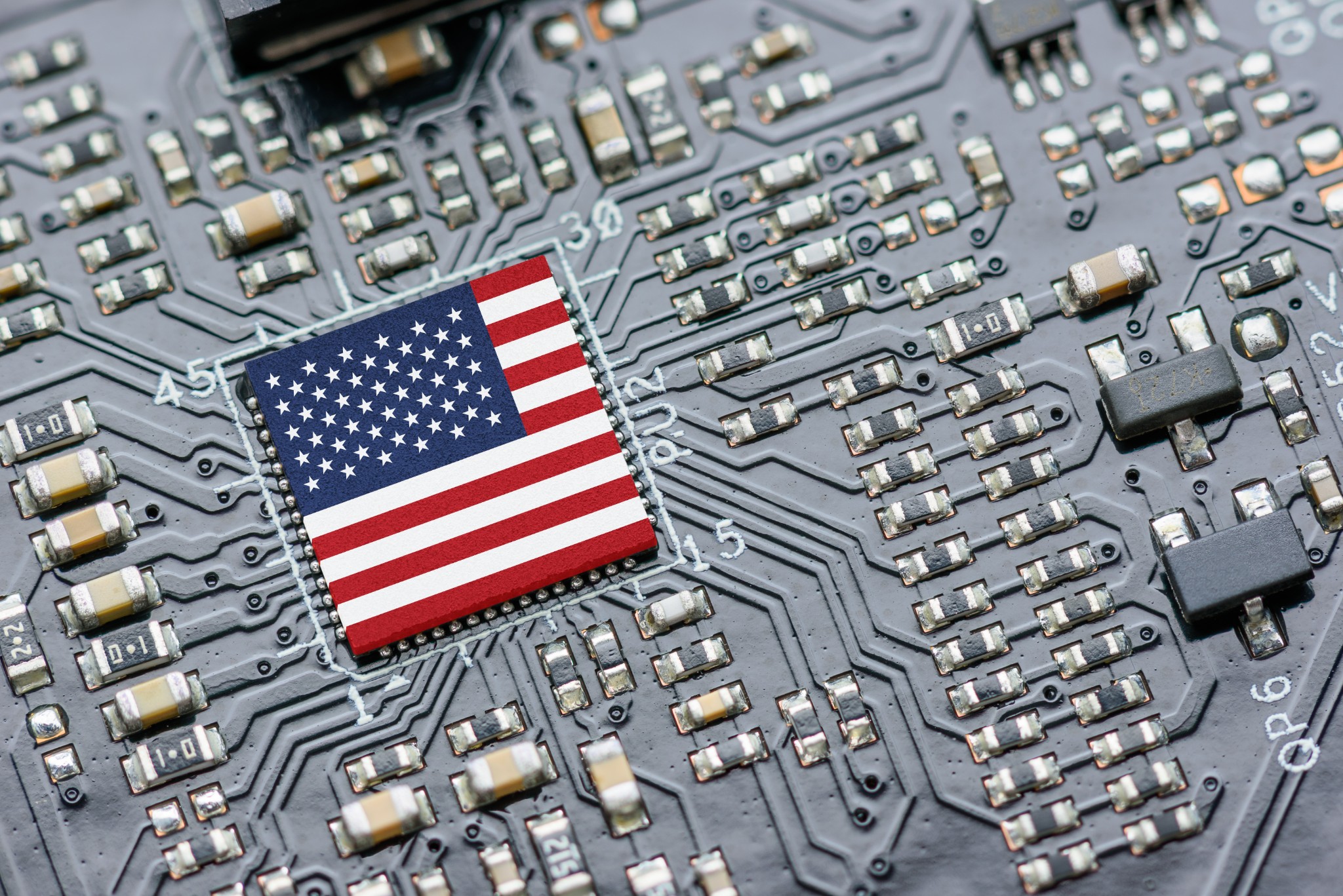 The photo is courtesy of William W. Potter via Adobe Stock Standard License.
The photo is courtesy of William W. Potter via Adobe Stock Standard License.
The Implications of a Burgeoning Technology War Between China and the U.S.
China and the U.S. are currently competing for dominance of the global economy and military power in a burgeoning technology war. The scientific advancements within technological communities are crucial to this competition. Taking this into account, on October 7 the Department of Commerce stated that the U.S. would ban the export of advanced computer chips to China to restrict its technological progress and development of artificial intelligence (AI). AI is important for improving China’s military capability, and 95% of advanced chips used in China are designed by American semiconductor companies. Semiconductors are materials that serve as components in producing the electronic chips necessary to develop AI technology. The technology is also used for surveillance purposes, with the Chinese government producing face-recognition technology enhanced by AI to spy on its population, a common tactic used by authoritarian regimes.
China plans to make the People’s Liberation Army a “world-class” military army by 2049. The technology holds significance for Chinese military expansion as it is heavily featured in China’s five-year plan for 2021-2026. The U.S. efforts to restrict China’s access to technological components represent a significant attempt to hinder China’s military development, to prevent China from building military capabilities that would put it on par with the U.S. Therefore, the burgeoning technology war is a vessel the U.S. can use to slow Chinese development in core technologies that lead to military development, economic expansion, or that utilize AI for malicious activity such as surveillance and monitoring. To better understand the situation, it is important to contextualize it with the previous trade war between China and the U.S. During the Trump administration in 2018, the U.S. imposed tariffs and trade barriers on Chinese imported goods, which has evolved into the beginnings of a technology war between China and the U.S.
From the U.S. side, the primary tool in this technology war appears to be export restrictions- a tactic that works slowly but is deemed an effective way of slowing down the opponent, as we have witnessed with Russia after the Kremlin’s invasion of Ukraine welcomed a wave of global economic sanctions. The sanctions imposed on Russia are impacting its economy, and technological advancements, and hindering its military operations from expanding accordingly since it is having difficulty replenishing its advanced weapons that rely on western technology components. Hence, the export ban on China will slow China’s progress in its five-year plan, and the sanctions put forth by the U.S. could encourage other countries to follow suit. The Chinese export ban has obtained broad consensus, especially from Washington D.C. where government officials claim China’s technological rise is characterized by accounts of cybertheft and industrial espionage.
The burgeoning technology war between China and the U.S. holds several implications for U.S. national security. First of all, the export ban impedes China’s efforts to meet or surpass U.S. military power, thereby increasing the potential longevity of U.S. power in the Pacific. Second, the Biden administration is aiming to secure the U.S. a leading position in the future of technological advancement, as supported by the passing of the CHIPS and Science Act of 2022. A third instance is economic, demonstrated by investments in the domestic manufacture of semiconductors and electronic chips, which in addition to developing technology in the U.S. will create more domestic jobs and strengthen supply chains. This will in turn hinder offshoring and the exploitation of cheap labor, simultaneously countering China. After the COVID-19 pandemic, creating job security for hundreds of thousands of workers will boost the economy, better insulate the U.S. market from disruptions overseas, and increase purchasing power.
As the ban on exporting semiconductors purposefully restricts Chinese military expansion and China’s economic growth, scholars are creating parallels to the Cold War when the Soviet Union and the U.S. utilized similar tactics to what we are witnessing today. Moreover, though the relationship between Beijing and Washington is strained, President Joe Biden and Xi Jinping met during the 2022 G20 Bali summit in Indonesia in November. Biden’s and Xi’s historical first meeting, while not a breakthrough, indicates China’s understanding that diplomacy is still important, despite the rage it expressed following Speaker Nancy Pelosi’s visit to Taiwan. Ultimately, the burgeoning technology war is based on goals around maintaining or increasing economic, military, and political power. Nonetheless, the U.S.-led sanctions are likely to make a difference in Chinese military capabilities, and export bans might become more frequent as the burgeoning technology war persists.






